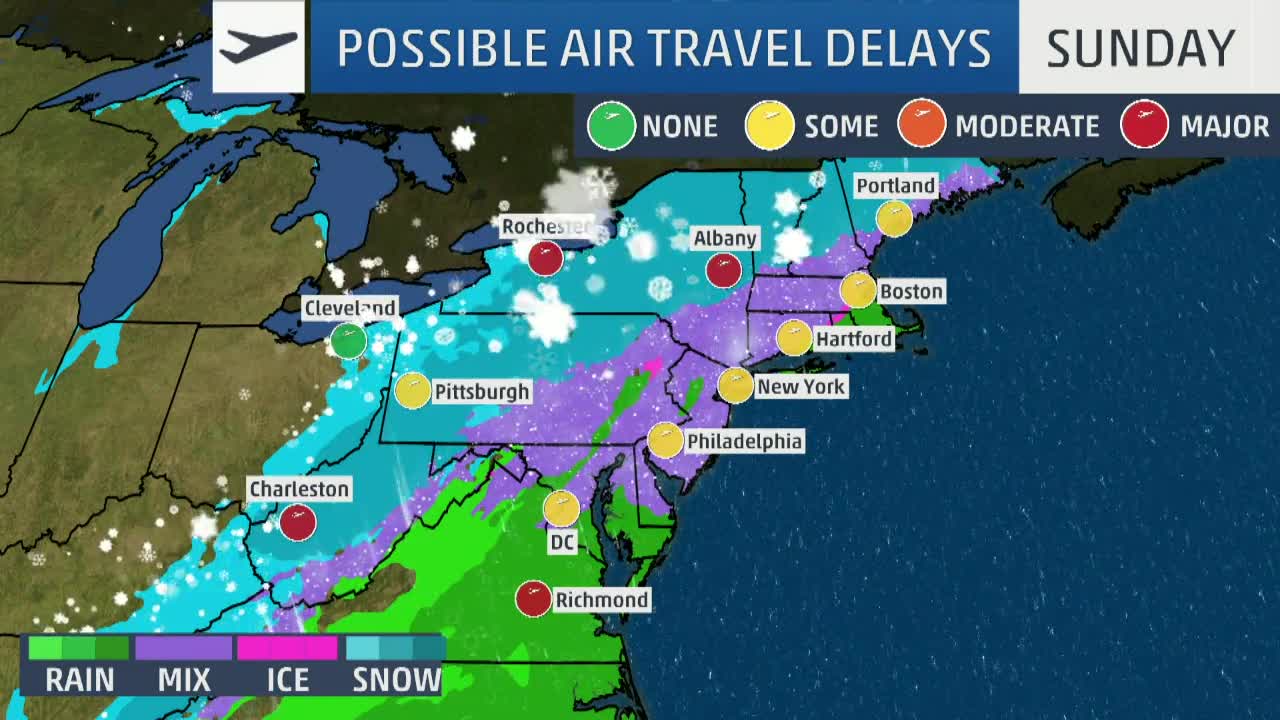Winter Storm & School Delays: A Parent's Guide To Preparation

Table of Contents
Creating a Winter Storm Emergency Kit
A well-stocked emergency kit is your first line of defense against the disruptions caused by winter storms and subsequent school delays. Having essential supplies readily available can alleviate anxiety and ensure your family's comfort and safety during power outages and extended school closures.
Essential Supplies:
Building your winter storm kit involves gathering items that address basic needs. Consider the following essentials:
- Non-perishable food items (enough for several days): Canned goods, energy bars, dried fruit, and other shelf-stable foods are ideal. Aim for enough food for each family member for at least 72 hours, or longer if severe weather is predicted.
- Bottled water: Stock up on plenty of water – one gallon per person per day for several days.
- First-aid kit with essential medications: Include bandages, antiseptic wipes, pain relievers, and any necessary prescription medications. Ensure you have enough medication to last for an extended period.
- Flashlights and extra batteries: Power outages are common during winter storms. Having multiple flashlights and plenty of batteries is crucial for safety and visibility. Consider battery-powered or hand-crank radios as well.
- Warm blankets and extra clothing: Pack warm layers, including hats, gloves, scarves, and thick socks, to protect against hypothermia.
- Portable charger for electronic devices: Staying connected is vital during emergencies. A portable charger will help keep your phones and other devices powered up.
- Important documents (copies of insurance cards, identification): Keep copies of essential documents in a waterproof bag within your kit.
Preparing for Power Outages:
Power outages are a significant concern during winter storms. Taking proactive steps to mitigate their impact is crucial.
- Consider a backup power source (generator, portable power station): A generator can power essential appliances, while a portable power station can charge devices. Ensure you understand the safe operation of any backup power source.
- Charge all electronic devices before a storm hits: Maximize the battery life of your phones, tablets, and laptops before the storm arrives.
- Have alternative heating sources (if safe and appropriate): A fireplace or wood-burning stove can provide supplemental heat, but always prioritize safety and proper ventilation. Never use a gas stove or oven for heating.
- Know how to safely operate a generator, if you have one. Generators produce carbon monoxide, a deadly gas. Always operate them outdoors and away from windows and doors.
Staying Informed During Winter Storms
Staying informed is critical during a winter storm. Knowing the severity of the storm and any related school delays allows you to make informed decisions about your family's safety.
Reliable Information Sources:
Utilize multiple sources to ensure you receive accurate and up-to-date information. Consider the following:
- Local news channels (TV and radio): Local news provides real-time updates on weather conditions and school closures.
- School district website and social media pages: Check your school district's official website and social media accounts for the latest announcements regarding delays or closures.
- National Weather Service website and app: The NWS provides detailed weather forecasts and warnings.
- Emergency alert systems (cell phone and weather radio): Sign up for emergency alerts on your phone and consider purchasing a weather radio for reliable information, even during power outages.
Understanding Weather Warnings:
Familiarize yourself with the different types of weather warnings to understand their implications.
- Learn the difference between advisories, watches, and warnings: Advisories indicate potential hazards, watches mean conditions are favorable for hazardous weather, and warnings indicate hazardous weather is occurring or imminent.
- Understand the implications of each alert level for your family: Each alert level requires a different level of preparedness. Warnings require immediate action.
- Know your evacuation route, if necessary: If you live in an area prone to flooding or other severe weather impacts, know your evacuation route and have a plan for getting your family to safety.
Planning for School Delays and Closures
Proactive planning for school delays and closures can minimize disruption and keep your children safe and engaged.
Establishing a Communication Plan:
A clear communication plan is essential for keeping everyone informed and safe during a winter storm.
- Designate a contact person for emergencies: Choose one person to be the primary contact for all family members.
- Ensure all family members know the plan: Make sure everyone understands the communication plan and how to contact each other.
- Establish a system for checking in during a storm: Agree on a regular time to check in with each other to ensure everyone is safe.
Creating a Backup Childcare Plan:
Having a backup childcare plan is crucial if schools close unexpectedly.
- Identify trusted friends, family members, or neighbors who can assist with childcare: Make arrangements in advance with reliable individuals.
- Consider arranging childcare in advance for unexpected school closures: If possible, secure childcare arrangements before a storm hits to avoid last-minute scrambling.
- Research local emergency childcare options if available: Some communities offer emergency childcare services during severe weather events.
Preparing for Remote Learning:
Many schools utilize remote learning during school closures. Be prepared for this possibility.
- Ensure your child has access to necessary technology (computer, internet): Check your internet connection and ensure your child's devices are working properly.
- Confirm they understand how to access online learning resources: Make sure your child knows how to log in and navigate their online learning platforms.
- Have backup learning activities ready in case of internet outages: Prepare offline activities to keep your child engaged if the internet goes down.
Conclusion
Being prepared for winter storms and school delays is crucial for maintaining family safety and reducing stress. By creating a comprehensive emergency kit, staying informed through reliable sources, and planning for potential school closures, you can effectively navigate these challenging situations. Remember to regularly review and update your winter storm and school delay preparedness plan. Don't wait until the next winter storm hits; start planning for winter storm and school delays today to ensure your family's well-being. Develop your winter weather preparedness plan now and ensure a smoother experience during future winter storms and school disruptions.

Featured Posts
-
 Maitrisez L Art De L Ecriture Lecons D Agatha Christie Et L Ia
May 20, 2025
Maitrisez L Art De L Ecriture Lecons D Agatha Christie Et L Ia
May 20, 2025 -
 Chivas Regal And Charles Leclerc A Winning Partnership
May 20, 2025
Chivas Regal And Charles Leclerc A Winning Partnership
May 20, 2025 -
 The Trump Presidency And Aerospace An Examination Of Deal Making
May 20, 2025
The Trump Presidency And Aerospace An Examination Of Deal Making
May 20, 2025 -
 Private Letters Shed Light On Agatha Christies Literary Battles
May 20, 2025
Private Letters Shed Light On Agatha Christies Literary Battles
May 20, 2025 -
 March 18 2025 Nyt Mini Crossword Complete Answers And Clues
May 20, 2025
March 18 2025 Nyt Mini Crossword Complete Answers And Clues
May 20, 2025
